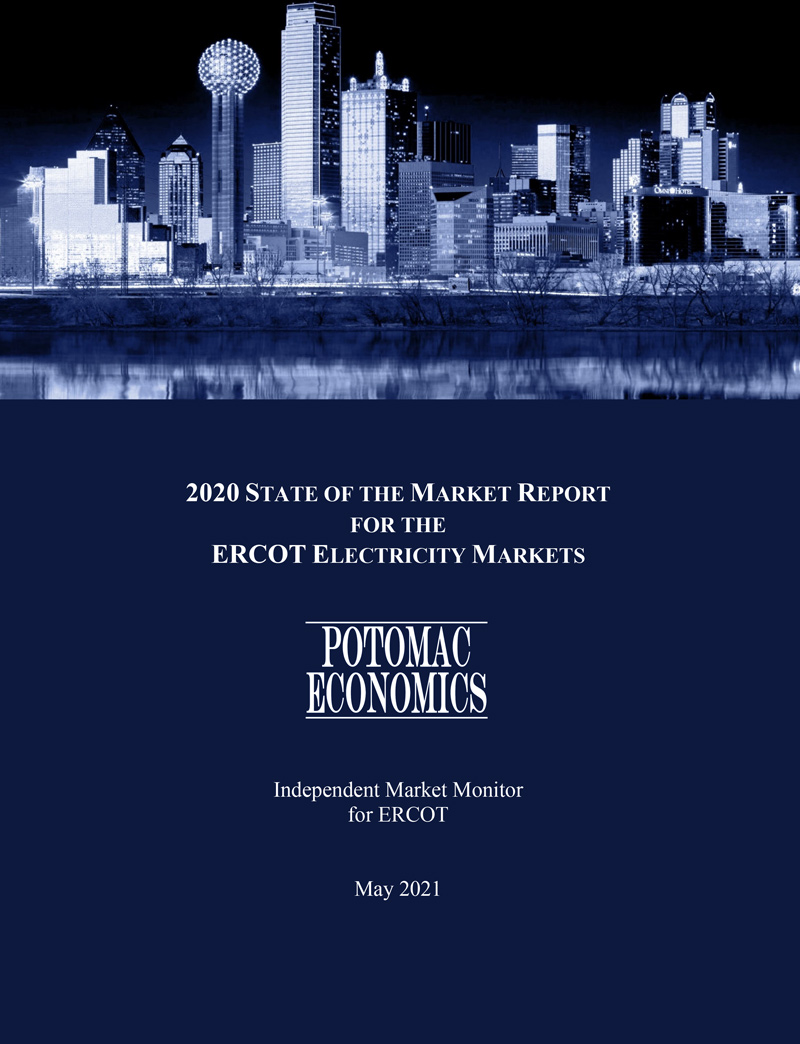ERCOT’s Independent Market Monitor last week released its annual State of the Market report for 2020, finding that the wholesale market performed competitively in 2020 but that February’s arctic weather event necessitated raising “initial issues” that need to be addressed.

The Monitor offered two recommendations to address design flaws that “resulted in costly and inefficient pricing” during and after the winter storm. It promised a full analysis of the storm’s effects for next year but suggested that regulators and market participants “consider corrective actions soon.”
It also advocated that “urgent attention” be paid to including firm load shed in the reliability adder’s calculation and capping ancillary services prices in the day-ahead market.
ERCOT staff wasted no time in responding to the Monitor’s call. Kenan Ögelman, the grid operator’s vice president of commercial operations, told the Public Utility Commission on Thursday that it is ready to file and co-sponsor with the Monitor two protocol changes incorporating the recommendations.
Ögelman said both changes could be implemented before the Texas summer heats up in July and into August. He assured the commission that both software changes would be stress tested.
The Monitor said real-time energy prices should reflect that firm load shed is an out-of-market action with a cost equal to the value of lost load (VOLL). Usually, that’s equal to the systemwide high offer cap of $9,000/MWh. It noted that because one additional megawatt of energy during those conditions allows ERCOT to serve an additional megawatt of load, energy’s value must equal the VOLL.
“Efficient pricing during these extreme shortages is essential in an energy-only market because it provides necessary economic signals to increase the electric generation needed to restore the load in the short term and service it reliably over the long term,” the Monitor said in the report.
During the February storm, firm load shed was initially excluded from the reliability adder, the Monitor said, causing prices to settle well below the cap. The PUC issued an emergency order to address the problem, but the Monitor said ERCOT later in the week included other load not yet restored to the reliability adder’s calculation, even though it was not subject to a load-shed instruction.
The result was 32 hours of prices clearing at $9,000/MWh in what the Monitor called “billing errors.” The PUC declined to reprice the $16 billion in market transactions, despite political pushback. (See Texas PUC Won’t Reprice $16B Error.)
The Monitor is also recommending ERCOT use a penalty price for ancillary services (AS) that is equal to or less than the VOLL and by capping AS clearing prices for capacity at the VOLL. Day-ahead prices for the services were as high as $26,000/MWh during the week of the storm and were regularly priced between $16,000 and $17,000, Ögelman told the PUC.
“Ancillary service prices more than VOLL violate fundamental economic principles and generate inefficient market outcomes,” the Monitor said. “Since reserves are procured to reduce the probability of losing load, the value of reserves should not exceed the cost of actually losing load (the VOLL).”
The Monitor said this would prevent future “irrational ancillary services” until 2025, when real-time co-optimization (RTC) is scheduled to be added to the market. ERCOT has projected it will cost as much as $55 million to add the RTC tool, which procures both energy and ancillary services every five minutes.
RTC’s implementation has been delayed by staffing constraints as ERCOT continues to address the storm’s effects on the system. The Monitor said the tool “promises to significantly lower costs and improve pricing during supply shortages.” (See “Passport Pushed Back 18 Months,” ERCOT Technical Advisory Committee Briefs: April 28, 2021.)
Average energy prices dropped 45% to $25.73/MWh in 2020, mostly because of a nearly 20% decrease in natural gas prices, the Monitor said. Real-time congestion costs were up 11% to $1.4 billion, mostly because of additional renewable resources causing stability issues. It said offer-price caps in smaller areas of the system with transmission limitations helped prevent market power abuses in the wholesale market.
The ERCOT region added more than 7 GW of new wind and solar resources and about 400 MW of natural gas supply in 2020. At the same time, the Monitor said about 1 GW of fossil resources retired in 2020.
The report makes three other recommendations to improve market performance:
- re-evaluate and redetermine the four competitive load zones every four years based on prevailing congestion patterns;
- apply a small bid fee to point-to-point (PTP) obligations that would be consistent with cost-causation principles and would incent participants to submit smaller bid quantities that are move valuable and likely to clear than no-charge PTP bids; and
- remove fixed-cost multipliers to ensure only marginal costs are included in mitigated offer caps.
It also keeps two recommendations from prior years:
- modify the allocation of transmission costs by transitioning away from the four-coincident-peak method so that the resulting incentive better reflects the true drivers for new transmission; and
- price ancillary services based on the shadow price of procuring each service.
The report, the first conducted entirely under new Director Carrie Bivens, retired six recommendations dating back to her predecessor’s tenure.



